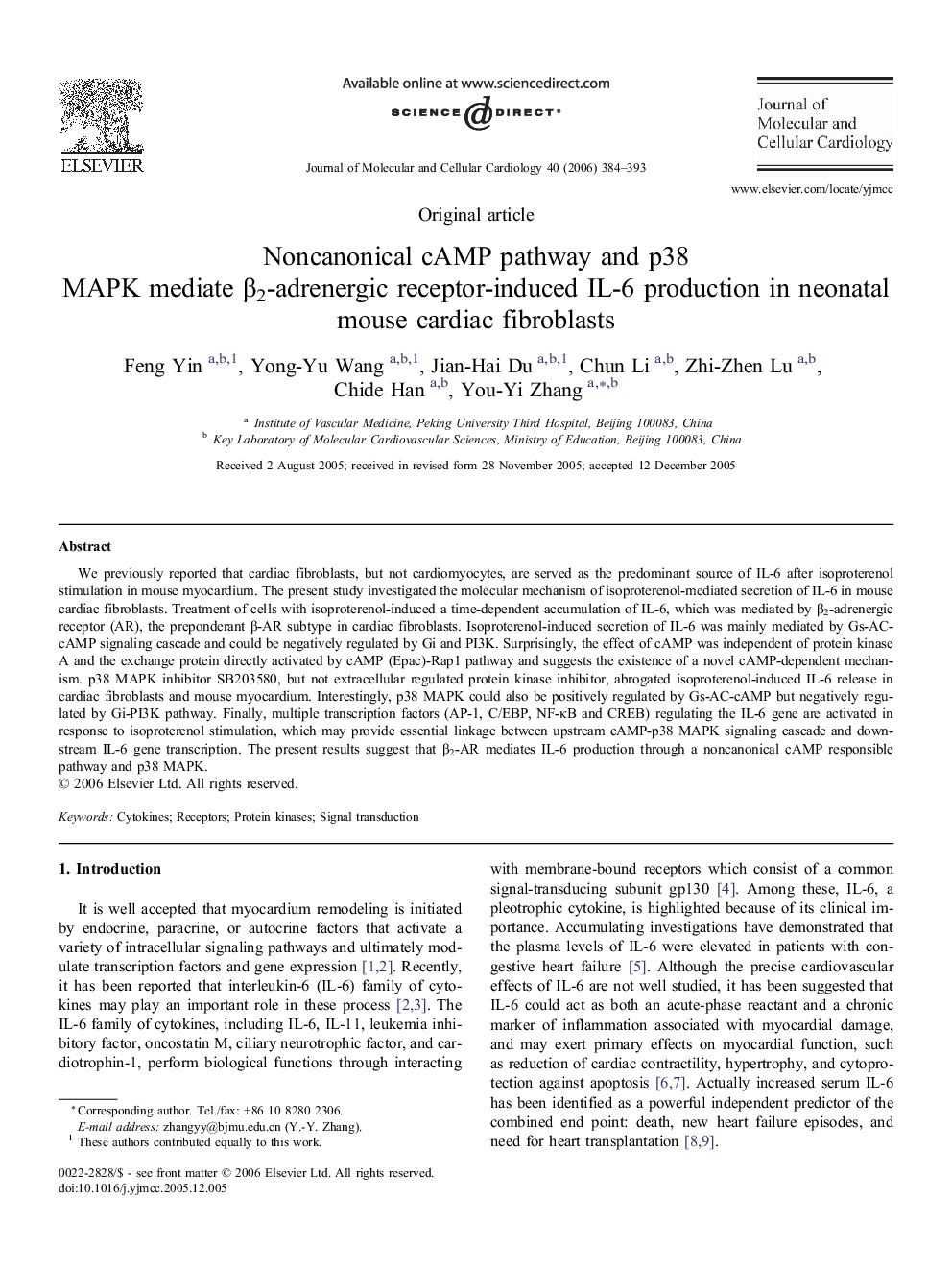| Article ID | Journal | Published Year | Pages | File Type |
|---|---|---|---|---|
| 2192539 | Journal of Molecular and Cellular Cardiology | 2006 | 10 Pages |
We previously reported that cardiac fibroblasts, but not cardiomyocytes, are served as the predominant source of IL-6 after isoproterenol stimulation in mouse myocardium. The present study investigated the molecular mechanism of isoproterenol-mediated secretion of IL-6 in mouse cardiac fibroblasts. Treatment of cells with isoproterenol-induced a time-dependent accumulation of IL-6, which was mediated by β2-adrenergic receptor (AR), the preponderant β-AR subtype in cardiac fibroblasts. Isoproterenol-induced secretion of IL-6 was mainly mediated by Gs-AC-cAMP signaling cascade and could be negatively regulated by Gi and PI3K. Surprisingly, the effect of cAMP was independent of protein kinase A and the exchange protein directly activated by cAMP (Epac)-Rap1 pathway and suggests the existence of a novel cAMP-dependent mechanism. p38 MAPK inhibitor SB203580, but not extracellular regulated protein kinase inhibitor, abrogated isoproterenol-induced IL-6 release in cardiac fibroblasts and mouse myocardium. Interestingly, p38 MAPK could also be positively regulated by Gs-AC-cAMP but negatively regulated by Gi-PI3K pathway. Finally, multiple transcription factors (AP-1, C/EBP, NF-κB and CREB) regulating the IL-6 gene are activated in response to isoproterenol stimulation, which may provide essential linkage between upstream cAMP-p38 MAPK signaling cascade and downstream IL-6 gene transcription. The present results suggest that β2-AR mediates IL-6 production through a noncanonical cAMP responsible pathway and p38 MAPK.
